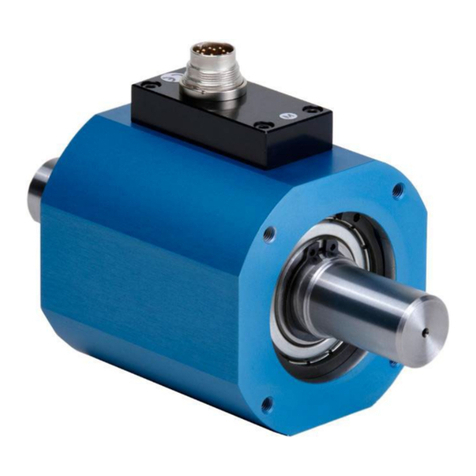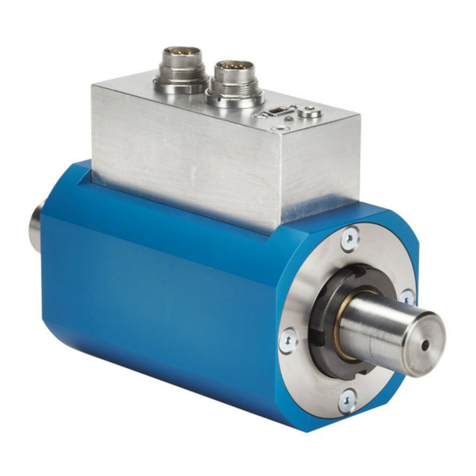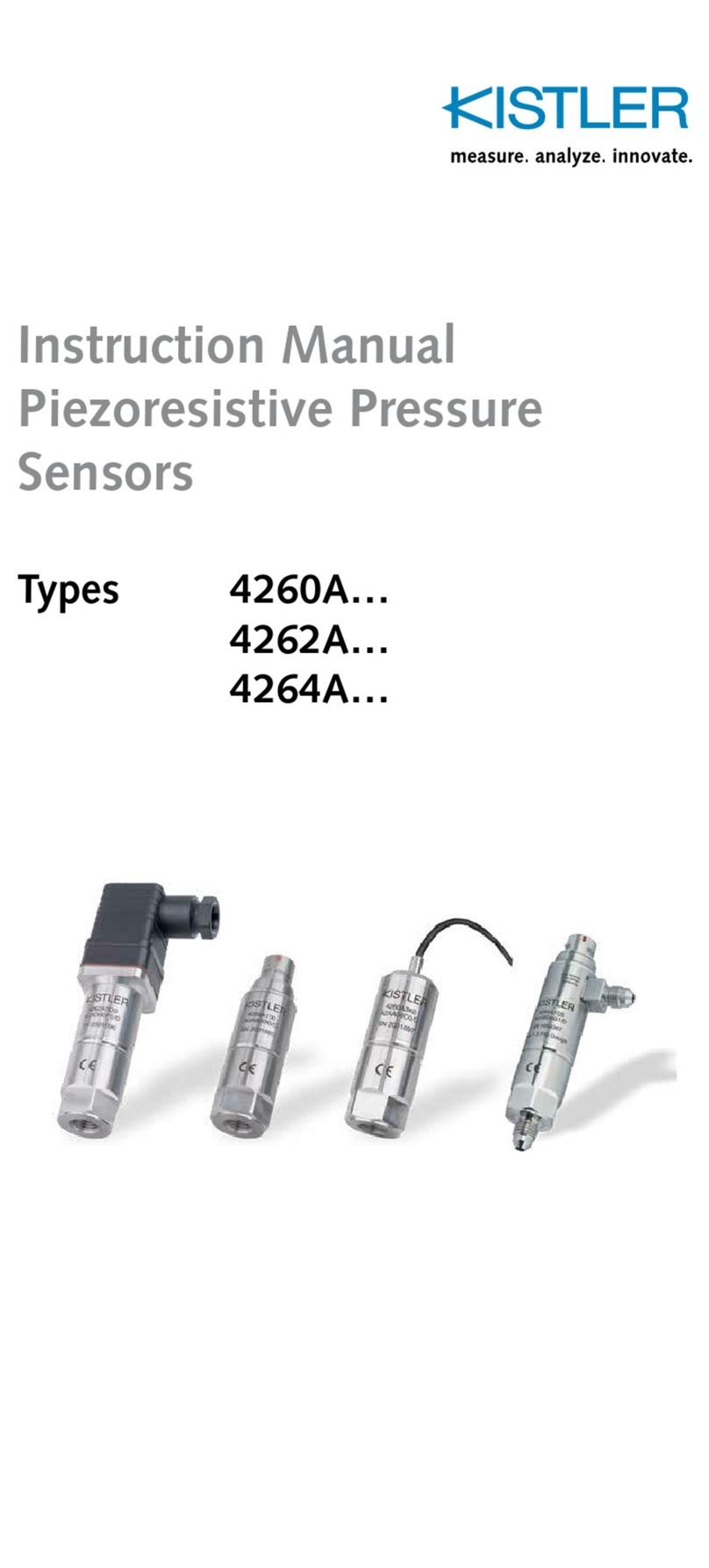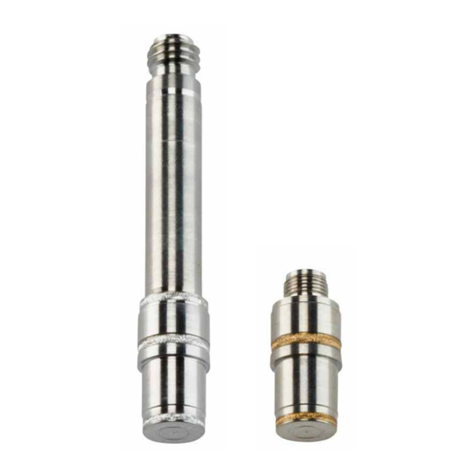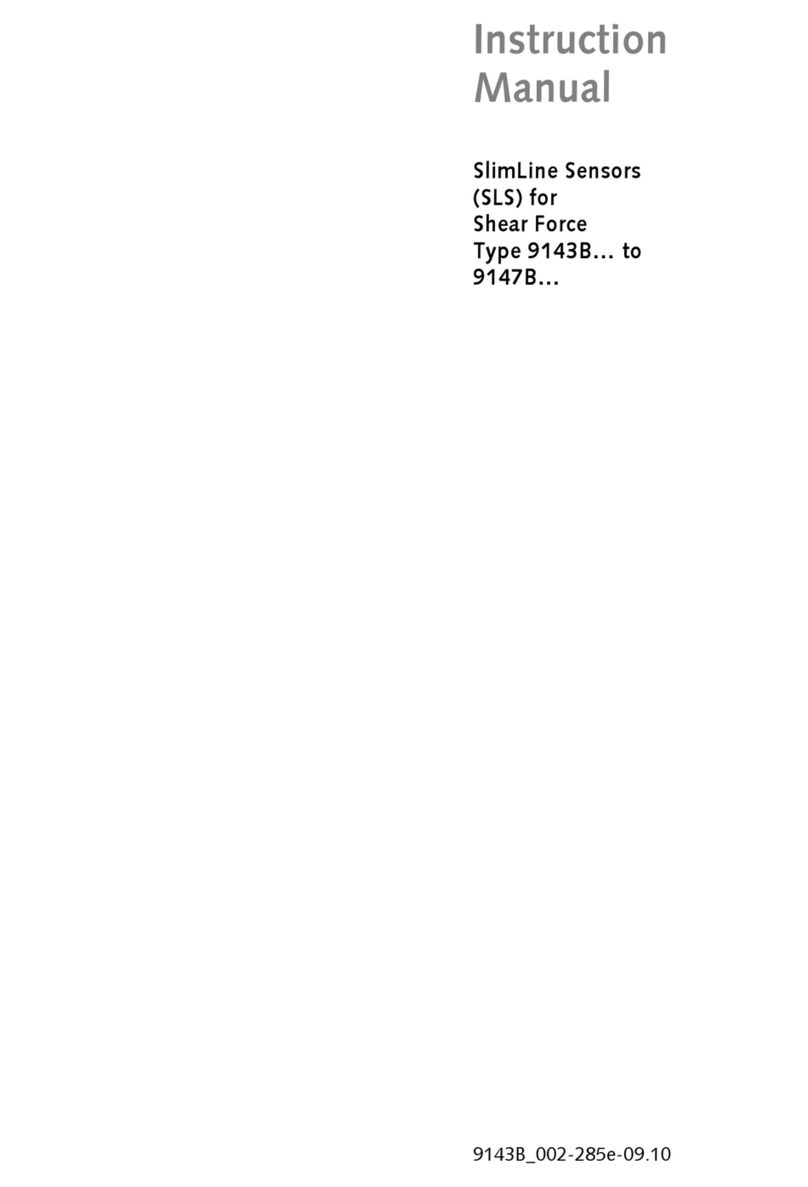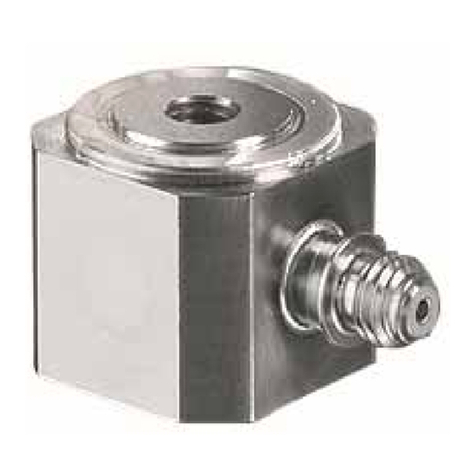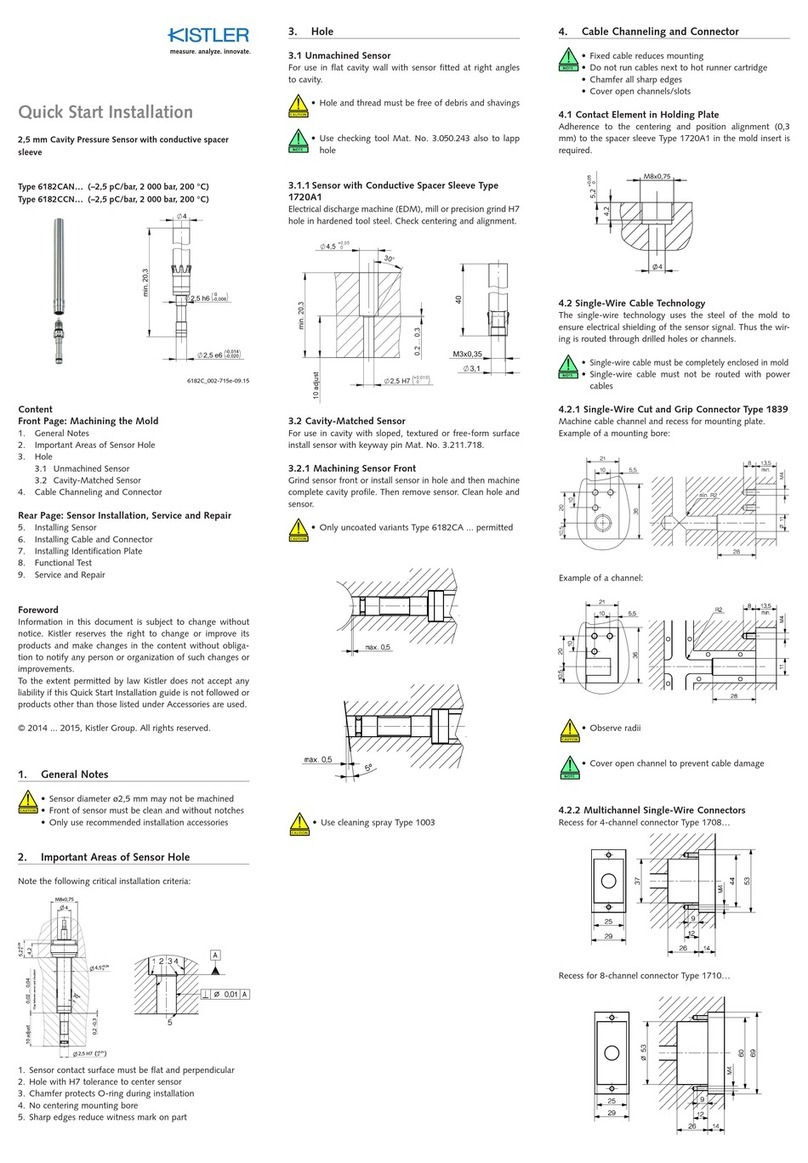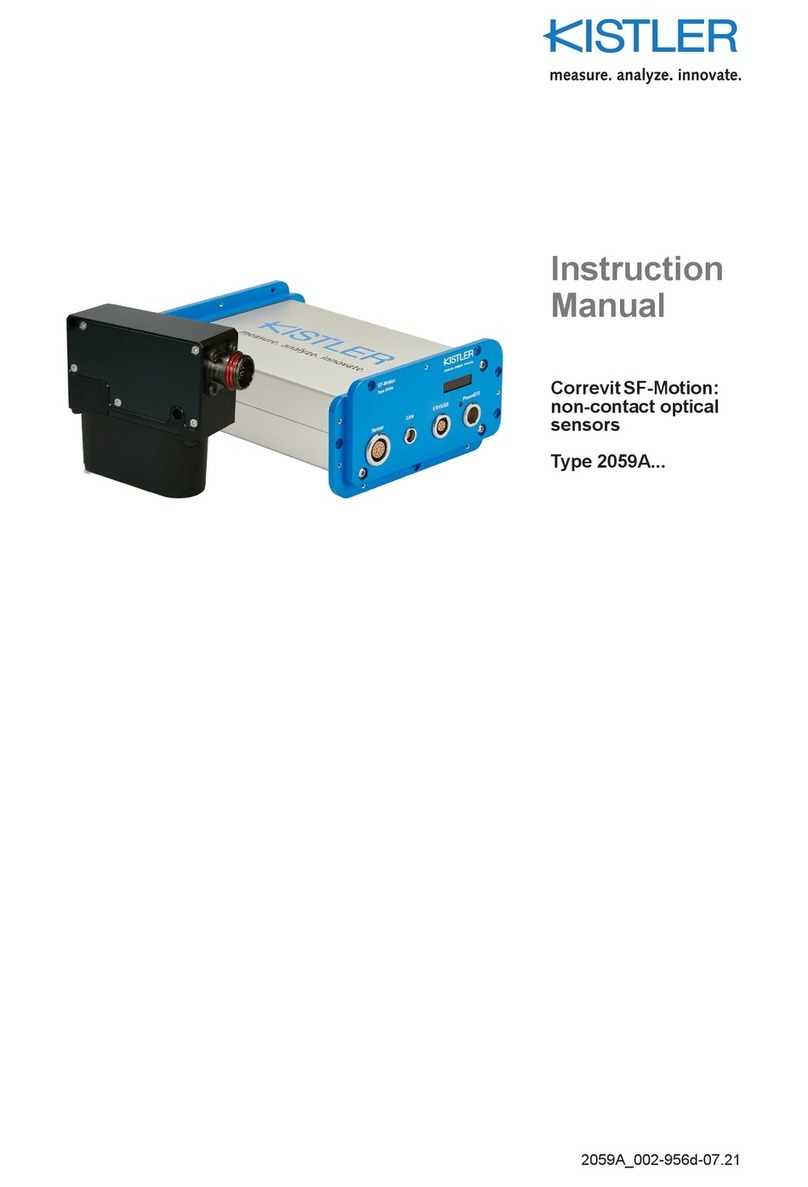
Water cooled piezoelectric sensors
7061_002-027e-09.18Page 2
Content
1. Introduction ...................................................................................................................................3
1.1 Disposal instructions for electronic equipment ...................................................................4
1.2 Software upgrades and updates.........................................................................................4
2. Preface..........................................................................................................................................5
2.1 Techical data and documentation .......................................................................................5
2.2 Principle of operation..........................................................................................................6
2.3 Requirements to water cooling ...........................................................................................7
2.4 Precautions for water cooling .............................................................................................7
3. Installation of the piezoelectric sensor ..........................................................................................9
3.1 General information ............................................................................................................9
3.2 Direct installation ................................................................................................................9
3.3 Installation with sleeve........................................................................................................9
3.4 Installation examples ........................................................................................................10
3.5 Machining the mounting bore ...........................................................................................11
3.6 Mounting the water hose on the cooling pipe ...................................................................11
3.7 Check points before installation........................................................................................12
4. Installing the sensor into the bore ...............................................................................................13
5. Piezoelectric sensor cable routing ..............................................................................................14
6. Setting up the measuring chain ..................................................................................................15
6.1 Connectingthepiezoelectriccabletochargeamplier ....................................................15
6.2 Selecting the sensor sensitivity ........................................................................................15
7. Dismounting and maintenance ...................................................................................................16
7.1 Dismounting......................................................................................................................16
7.2 Maintenance .....................................................................................................................16
Kistler Technical Center services...........................................................................................................19
Total pages 19


